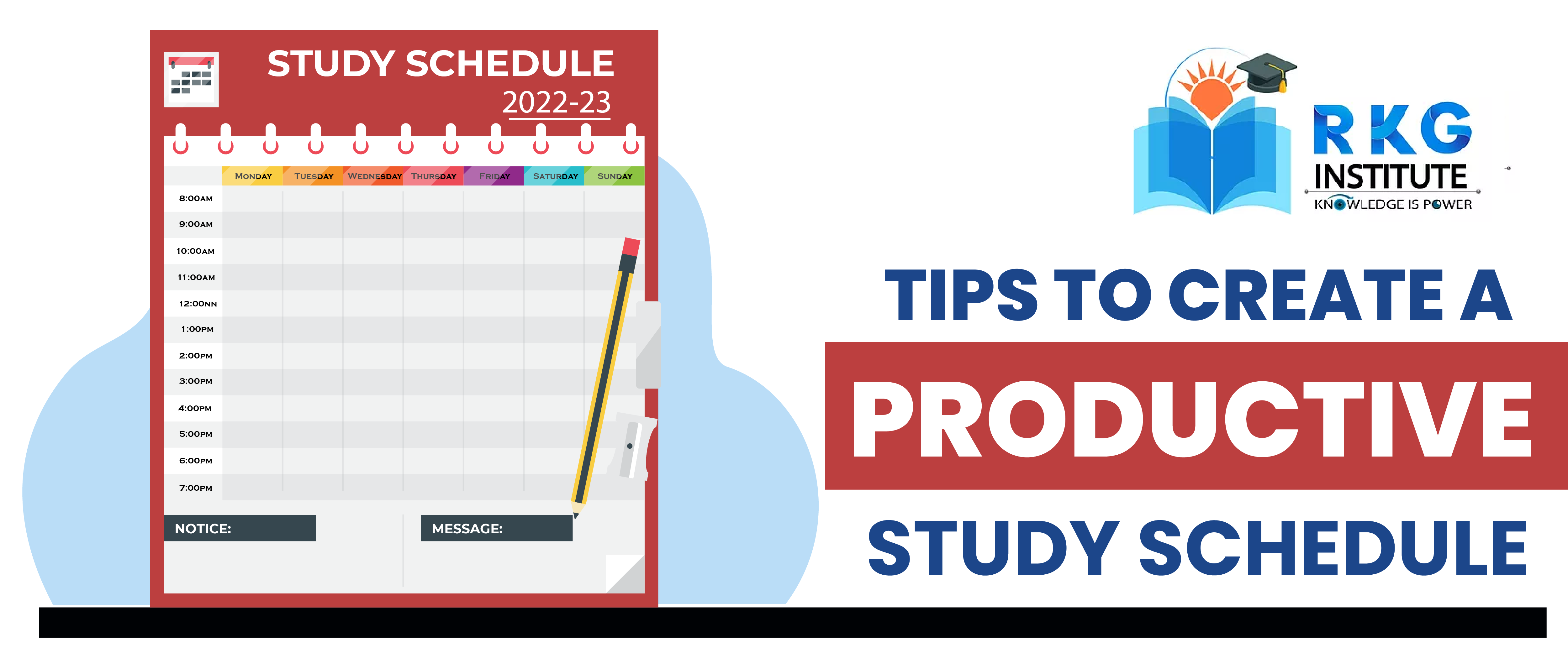Creating a realistic study schedule is something where students face many challenges. Many students simply copy the whole schedule followed by their friend or suggested by their teachers, and most of the times, they fail to comply with it. While it is good to extract suitable elements from someone else’s study schedule, a self-created schedule is the pre-requisite for a good study cycle.
True, it takes a lot of patience and energy to actually sit, analyse your study habits and create a study schedule according to that. But once you create a schedule, studying becomes predictable, planned and productive.
This article will point out some tips that are very valuable to create a productive study schedule for students.

- Create a ‘distraction schedule’
While the term may seem very odd, creating a distraction schedule actually helps a lot to focus on your studies.
The major deterrent to studies is distraction – checking your phone, talking to friends, scrolling social media, etc. The best way to control these distractions is to fix a time for each of these.
Fix a time slot in a day when you would only check your social media or talk to your friend or do whatever you think distracts you while studying. Knowing that you have sufficient time for these things, you will probably able to focus better in your study time.

- 2. Use Pomodoro technique
One of the major reasons why students find it difficult to concentrate while studying is that they don’t take enough breaks. Concentrating for too long isn’t very feasible for human brain.
The pomodoro time management technique is very famously followed to overcome this challenge.
- Divide your day into slots of 25-5 minutes. Work for 25 minutes, then take a break of 5 minutes.
- Repeat this cycle 3-4 times. After that, take a long break of 30 minutes.
Following this technique keeps your productive and concentrated throughout the day without feeling tired.

- 3. Figure out the requirements and set goals
Many a times students do not even know how much they need to study. In order to create a productive study schedule, it is very important to track and figure out how much time you need to give to each subject according to your own grasping power.
- Check the number of chapters that you need to complete in each subject.
- Take into account your grasping rate. Grasping rate refers to the amount of knowledge that you can naturally process in a period of time. Let’s say that you can very nicely read and understand 5 pages of history in 30 minutes. Then your grasping rate for history would be 10 pages/hour. Note that your grasping rate will be different for different subjects, due to variations in the nature of subject.
- Set your goals in accordance to your grasping rate of different subjects. It would be unrealistic to set a goal of finishing a chapter of history consisting 50 pages in one hour, if your grasping rate is 10 pages/hour. You will either end up missing the target or compromising with your understanding to finish the goal. Make realistic goals.

- 4. Take your learning style and nature in account
You might have heard from parents and teachers and some friends that students must study early in the morning to increase their concentration. Or you may have heard toppers saying that they make digital notes of whatever they read.
While such thoughts are highly influencing, do not take any decision opposed to your learning style and nature. While getting up in morning definitely has many benefits, if you feel that you can focus better at night, or in the afternoon, go ahead with that plan. If you feel that you need to write down everything you read to remember it, do so. Do not blindly follow anyone’s technique. Adopt it only if it suits you. Learn to make your OWN schedule.

- 5. Use manual/digital planners
It is very important to have a track of how much you need to study and how much you are actually studying. Self-evaluation is the most important part of a healthy study schedule that most of the students neglect.
You can either have a manual or a digital planner, as per your comfort, where you can list and plan your priorities to create a study schedule, and the end of the day, evaluate yourself.


